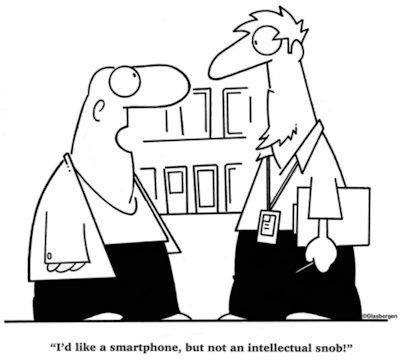 AI Smartphones
AI Smartphones
AI smartphones have revolutionized how we interact with technology, making devices smarter, more intuitive, and more user-friendly
Related: AI in our Everyday Lives
These smartphones integrate advanced features like real-time translation, enhanced photography, and productivity tools into their products. AI in smartphones enables smarter, faster, and more personalized interactions by learning user habits and preferences, processing data efficiently, and automating tasks. As AI technology continues to advance, smartphones will become even more integral to our daily lives, offering features and capabilities that enhance convenience, security, and overall functionality.

 Key Features of AI Smartphones
Key Features of AI Smartphones
- AI-Powered Virtual Assistants: Smartphones come with AI-driven virtual assistants like Siri (Apple), Google Assistant, and Alexa. These assistants can perform tasks such as setting reminders, answering questions, and controlling smart devices using natural language processing (NLP).
- Camera Enhancements: AI improves smartphone photography by automatically adjusting settings like exposure, focus, and color balance based on the scene. Features include scene recognition (e.g., detecting landscapes, portraits, or food), AI-based image stabilization and noise reduction, and real-time filters and augmented reality (AR) effects.
- Battery and Performance Optimization: AI monitors user behavior to optimize battery life by managing background apps and adjusting performance settings. Adaptive charging helps preserve battery health by charging intelligently.
- Personalized User Experience: AI learns user habits to provide predictive suggestions, such as app recommendations, shortcuts, or even predicting text during typing. Smart notifications prioritize important alerts while filtering out less relevant ones.
- Enhanced Security: AI enables advanced security features, such as facial recognition and fingerprint scanning for device unlocking, behavioral biometrics to detect unauthorized access based on user interactions, and AI-powered spam detection and fraud prevention.
- Voice Recognition and Commands: Advanced voice processing allows users to control devices hands-free and dictate messages with high accuracy, even in noisy environments.
- AI for Accessibility: AI aids users with disabilities by providing features such as voice-to-text, text-to-speech, and object recognition for the visually impaired.
- Real-Time Language Translation: AI enables real-time language translation through apps or built-in features, bridging communication gaps during travel or multicultural interactions.
- Gaming and AR: AI optimizes gaming performance and enables augmented reality (AR) applications, enhancing user experience in interactive gaming and virtual environments.
 AI Technologies in Smartphones
AI Technologies in Smartphones
- Machine Learning (ML): Smartphones use on-device ML models for tasks such as predictive text, app recommendations, and speech recognition.
- Neural Processing Units (NPUs): Many modern smartphones include dedicated hardware, such as NPUs, for handling AI tasks efficiently. These chips speed up AI computations while conserving battery life.
- Edge AI: AI processing is increasingly done on the device (edge computing) rather than relying on cloud servers. This approach enhances privacy and reduces latency.
 AI Smartphone Models
AI Smartphone Models
AI smartphones have become increasingly prominent, featuring innovative tools that enhance photography, voice assistance, and productivity. The following smartphone models demonstrate how AI is reshaping smartphone functionality. We expect much more in the near future.
Apple iPhones: Apple's A-series chips integrate machine learning for tasks like photography (Deep Fusion) and app optimization. Siri provides robust AI-powered assistance.
Google Pixel: Known for AI-powered features like Night Sight for low-light photography, real-time transcription, and Google Assistant.
- Google Pixel 9 Pro: Known for its AI-driven photo editing capabilities, the Pixel 9 Pro features tools like Magic Editor for altering photo elements and generative AI for creative adjustments. It also has Gemini Live, a highly conversational voice assistant, and advanced features like call transcription and text summarization. However, some users note slower transitions between apps compared to competitors.
Samsung Galaxy Series: Samsung devices feature Bixby for AI assistance, AI-enhanced cameras, and performance optimization through the Exynos or Snapdragon processors.
- Samsung Galaxy S24 Ultra: Samsung focuses on integrating AI into its ecosystem with tools for live translation, grammar correction, and AI-augmented photography. Its pricing is on the higher side, but it balances performance with an array of AI utilities. AI tools include Circle to Search, Live Translate, and Nightography.
- Samsung Galaxy S24 FE: AI-powered photo editing (background adjustments, brightness enhancements)
OnePlus 12: AI-enhanced photography with triple camera setup
Huawei Mate and P Series: These devices leverage the Kirin chip's NPU for AI photography, battery optimization, and face recognition.
Xiaomi and Oppo: These brands incorporate AI for camera features, voice assistance, and user interface enhancements at competitive price points.
- Xiaomi 14 Ultra: This phone excels in photography, with its Leica-engineered camera system and features like AI Ultra Zoom and AI Image Enhancement. It's ideal for those who prioritize detailed and professional-grade images. Xiaomi also integrates AI tools like audio transcription and voice translation. While its camera is highly advanced, its bulkiness can be a drawback.
Motorola Razr 50 Ultra: A foldable smartphone equipped with Google's Gemini AI, it offers AI-powered text tone adjustments and advanced photo recognition. Its compact design and robust outer display make it a standout among foldable devices, though its AI tools are still maturing compared to Google and Xiaomi models.
 Future Applications
Future Applications
- Smarter Personalization: AI will provide even more tailored experiences, predicting user needs and automating complex tasks seamlessly.
- Advanced AR and VR: Integration of AI with AR/VR will enhance immersive experiences for gaming, shopping, and education.
- Improved Privacy and Security: AI will continue to bolster smartphone security while ensuring better privacy through on-device data processing.
- Healthcare Integration: AI in smartphones will assist in health monitoring, such as tracking heart rates, stress levels, and other vital signs.
 Links
Links
stuff.tv/features/best-ai-phones-which-smartphone-has-the-best-ai-features/
techradar.com/phones/best-ai-phone
telegraph.co.uk/recommended/tech/best-smartphones/
tomsguide.com/best-picks/best-phones
OnePlus 12
androidcentral.com/phones/oneplus-12-android-15-ai-features-arrive
androidpolice.com/oneplus-12-ai-features-oxygenos-15-update/
cnet.com/tech/mobile/oneplus-12-review-a-powerhouse-flagship-with-one-key-flaw/
gsmarena.com/oneplus_12_oxygenos_15_ai_features_update-news-65527.php
phonearena.com/news/oneplus-12-update-ai-features_id165327
Galaxy 24
cnet.com/tech/mobile/galaxy-s24-ultra-review-hidden-gems-beyond-ai/
pcmag.com/reviews/samsung-galaxy-s24